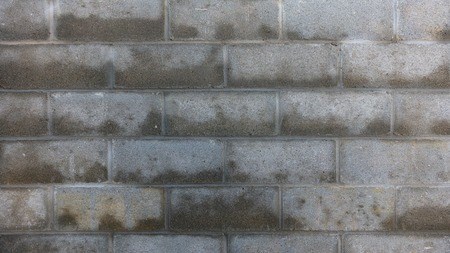When selling your home, it’s normal to want to present it in the best condition possible, but rushing to conceal damp problems with Polyfilla and paint may be one of the most costly mistakes you can make. The recent article published on Minde Schapiro & Smith’s website highlights the consequences of sellers hiding damp problems.
Damp is deceiving. It can include minor condensation to rotting timbers that could threaten the structure of the property. Complicating this is that signs of damp do not always indicate the severity of the problem especially if deep penetrating damp is hidden in the walls and only manifests in small patches, or is in the roof which is rarely accessed.
Selling a home with damp problems can reduce the value of a property by up to 20%, and may cost hundreds of thousands of Rands to repair let alone the time delays in getting the property into the marketplace. For financially- or time-stressed buyers, it can be tempting to hide evidence of damp, but a better solution is to declare the issue upfront, even if it means selling at a lower price. Not doing so can expose the seller to litigation even after the sale of the property.
This was the case recently presented to the High Court, and which legal firm, Minde Schapiro & Smith highlights as proof of the consequences of not disclosing or attempting to hide evidence of damp with paint and Polyfilla.
Note that this legal case was argued based on the rule: [w]here a seller recklessly tells a half-truth or knows the facts but does not reveal them because he or she has not bothered to consider their significance, this may also amount to fraud” … “a willful abstention from establishing the true facts does not constitute a lack of knowledge”
The case:
The buyer of a house only became aware of substantial damp problems in the ceilings and walls after taking transfer and when planning renovations. The damp was caused both by rising damp, and water flowing down into the walls due to failed waterproofing.
The sellers (a divorced couple) refused to pay for the repairs (costing just under R245k) and the buyer sued them for either damages or a reduction in the purchase price.
Highly relevant was the fact that twice in the year of sale, the ex-wife (living alone in the house and tasked with selling it after the divorce) had called in contractors to repaint and carry out “cosmetic repairs”; extensive repairs judging by the drum of paint and 24kg of Polyfilla involved.
What the buyer had to prove:
- Defects: That there were defects in the property at the time of the sale which “affected the use and value of the property”. The buyer had no difficulty in proving that the damp problems qualified as defects for this purpose.
- Latent, not patent: That the damp was a latent defect, not “obvious or patent” to the buyer. This is important because latent defects are defects that “would not have been visible or discoverable upon inspection by the ordinary purchaser” so if the damp was a “patent” defect, the buyer should have picked it up. The buyer in this case was able to convince the Court that the damp was not discoverable by her at the time of sale because all traces of it had been concealed by the remedial work paint and Polyfilla.
- Fraud: That the damp as a latent defect was not covered by the voetstoots clause, a standard clause in deeds of sale which specifies that the property is sold “as is” and without any warranty. The effect of such a clause is that the buyer agrees to carry the risk of latent defects, but only if there was no fraud on the part of the seller.
The the buyer therefore had to establish fraud, by proving two things –
- That the sellers were aware of the damp and its consequences.
- That the sellers deliberately concealed the damp with the intention to defraud.
Proving fraud – how relevant is the “property condition report”? The following factors were central to the Court’s conclusion that both sellers had acted with fraudulent intent:
The sellers’ protestations that either they were unaware of the damp problems or had not intended to fraudulently conceal them found no favour with the Court on the facts – which included the extent and nature of the re-painting carried out.
The ex-wife’s claim to have been ignorant of the damp issues, despite the extent and nature of the “cosmetic repairs” she carried out, was rejected. As the Court put it: “At best for her, she remained willfully ignorant of the underlying cause of the issues in the paintwork; she could not honestly have believed that the core issue had been remediated.”
The ex-husband for his part admitted that he had known of damp issues in two rooms because of bubbling paint and a smell of damp, with the Court concluding that: “He appears to have taken no steps to ascertain how extensive or serious those problems were – but a willful abstention from establishing the true facts does not constitute a lack of knowledge.”
Perhaps most damningly of all, both the ex-husband and the ex-wife had signed the mandatory Property Condition Report (“defects disclosure form”), in which they specifically stated that there were no latent defects in the property, including “dampness in walls/ floors”.
The Court held that the buyer had proved fraud by both sellers and confirmed her award of R244,855 in damages for the repairs.
Other impacts:
Damp problems or the concealing of those, may be revealed during a building inspection undertaken by a home loan provider. As a result the buyer may lose trust in the seller, and find ways to walk away from the sale. The buyer may also be concerned about the health issues associated with long-term damp, such a mould and rot, especially if the residence is to be occupied by children who may be at risk of contracting asthma.
Overall it is far more cost effective for the seller to repair the damp problems, or disclose those, than being sued for the cost of repairs after the sale and which can often be much more expensive.




